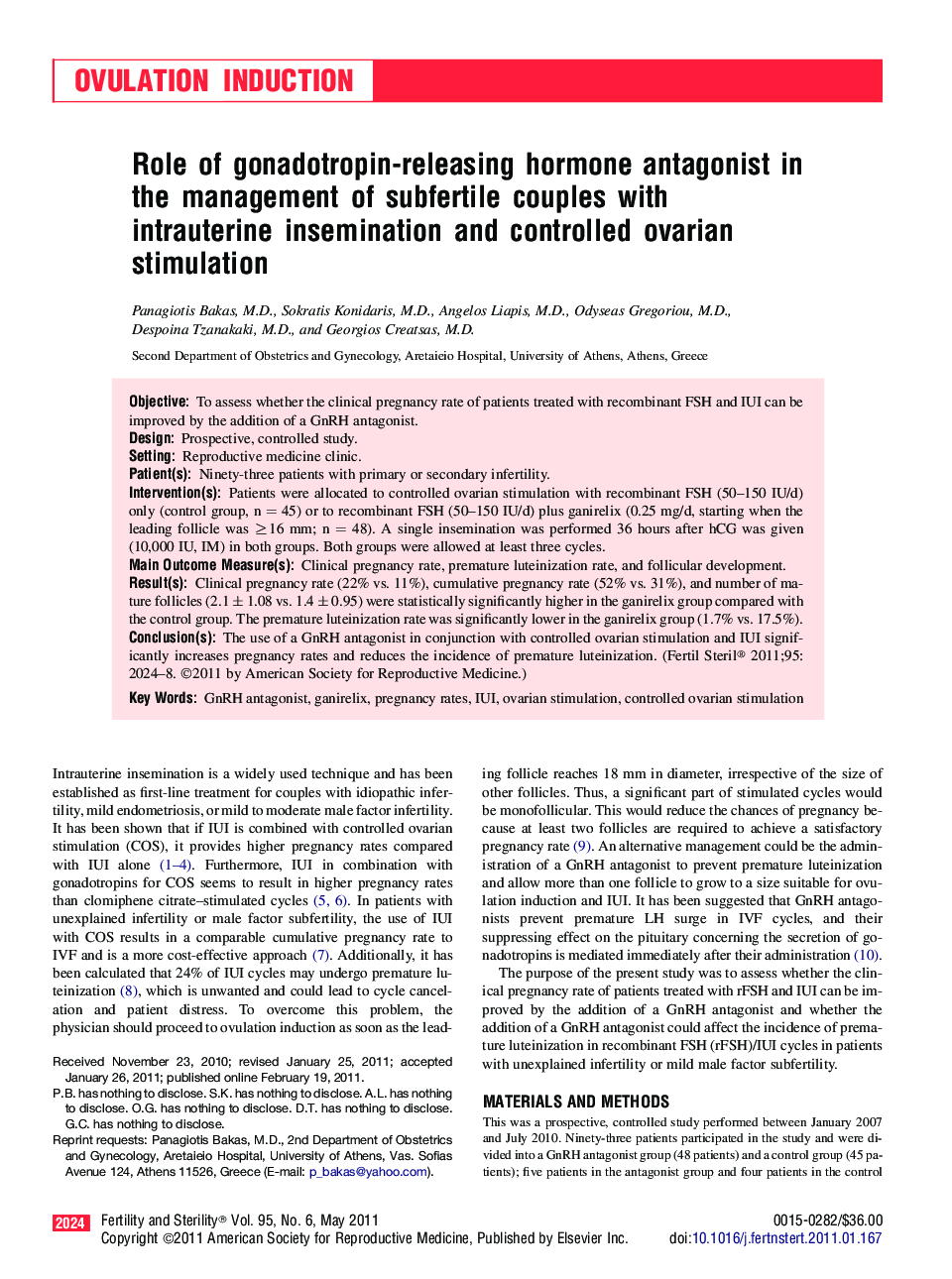| کد مقاله | کد نشریه | سال انتشار | مقاله انگلیسی | نسخه تمام متن |
|---|---|---|---|---|
| 3940076 | 1253577 | 2011 | 5 صفحه PDF | دانلود رایگان |

ObjectiveTo assess whether the clinical pregnancy rate of patients treated with recombinant FSH and IUI can be improved by the addition of a GnRH antagonist.DesignProspective, controlled study.SettingReproductive medicine clinic.Patient(s)Ninety-three patients with primary or secondary infertility.Intervention(s)Patients were allocated to controlled ovarian stimulation with recombinant FSH (50–150 IU/d) only (control group, n = 45) or to recombinant FSH (50–150 IU/d) plus ganirelix (0.25 mg/d, starting when the leading follicle was ≥16 mm; n = 48). A single insemination was performed 36 hours after hCG was given (10,000 IU, IM) in both groups. Both groups were allowed at least three cycles.Main Outcome Measure(s)Clinical pregnancy rate, premature luteinization rate, and follicular development.Result(s)Clinical pregnancy rate (22% vs. 11%), cumulative pregnancy rate (52% vs. 31%), and number of mature follicles (2.1 ± 1.08 vs. 1.4 ± 0.95) were statistically significantly higher in the ganirelix group compared with the control group. The premature luteinization rate was significantly lower in the ganirelix group (1.7% vs. 17.5%).Conclusion(s)The use of a GnRH antagonist in conjunction with controlled ovarian stimulation and IUI significantly increases pregnancy rates and reduces the incidence of premature luteinization.
Journal: Fertility and Sterility - Volume 95, Issue 6, May 2011, Pages 2024–2028